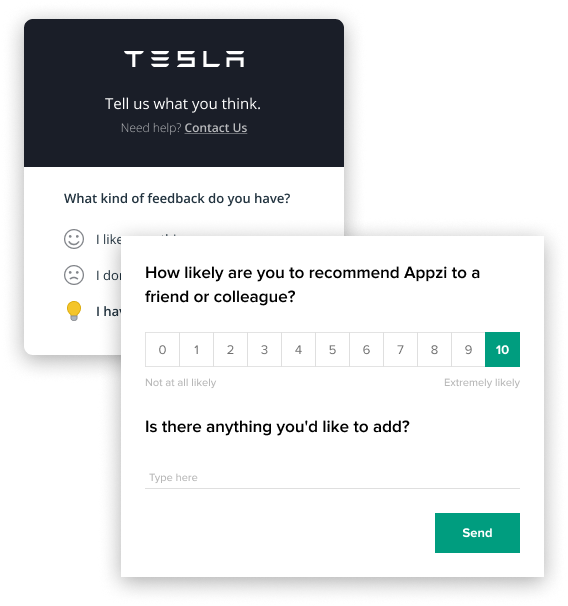Boost Your Business: 15 Essential Customer Feedback Survey Questions
Understanding your customers is not just a goal; it’s a fundamental requirement for business survival and growth in today’s competitive landscape. Simply asking for feedback is no longer enough. Businesses need to actively solicit, analyze, and act upon customer insights to refine their products, services, and overall customer experience. This is where customer feedback surveys become an indispensable tool. They provide a structured way to capture the voice of your customers, revealing invaluable information about satisfaction, pain points, and areas for improvement.
Implementing effective customer feedback surveys can transform your business. They move you from assumptions to data-driven decisions, fostering loyalty and enabling innovation. However, simply distributing a survey isn’t enough. The questions you ask are critical. Poorly constructed questions can lead to vague answers, low response rates, and ultimately, wasted effort. This article delves into the strategic importance of customer feedback surveys and provides a curated list of 15 essential questions designed to elicit meaningful, actionable insights.
The Power of Customer Feedback Surveys
Customer feedback surveys serve as a direct pipeline to your customers’ minds. They allow you to:
- Measure Satisfaction: Gauge overall happiness with specific interactions or your entire offering.
- Identify Pain Points: Pinpoint frustrating experiences or service failures.
- Uncover Opportunities: Discover unmet needs or areas where you can exceed expectations.
- Validate Successes: Confirm what’s working well and reinforce positive actions.
- Build Loyalty: Demonstrate that customer opinions matter, fostering a sense of partnership and increasing loyalty.
- Inform Decision Making: Provide concrete data to guide product development, service improvements, and marketing strategies.
When used consistently and strategically, feedback gathered through customer feedback surveys provides a powerful mechanism for continuous improvement. It transforms raw opinions into actionable intelligence, helping businesses stay agile, relevant, and customer-centric. The key is not just collecting feedback, but ensuring it leads to tangible change.
Designing Effective Customer Feedback Surveys
Before diving into specific questions, it’s crucial to understand the principles of effective survey design. A well-crafted survey respects the respondent’s time and elicits more accurate and thoughtful answers. Here are some foundational tips:
Keep it Concise and Focused
Respect your customers’ time. Aim for surveys that can be completed in 2-3 minutes or less. Clearly state the purpose of the survey upfront so respondents understand why their input is valuable. Focus on specific aspects relevant to their recent interaction or overall experience, rather than trying to cover too much ground. A targeted approach yields more actionable data.
Use Clear and Simple Language
Avoid jargon, technical terms, or overly complex sentence structures. Use plain language that is easy for all customers to understand, regardless of their background. Ambiguous questions will lead to ambiguous answers.
Structure for Flow and Engagement
Logical progression is key. Start with easy, non-threatening questions to build rapport, then move to more specific or sensitive topics. Mix question types (rating scales, multiple choice, open-ended) to maintain interest. Consider offering an option for open-ended feedback at the end for detailed qualitative insights.
Respect Privacy and Anonymity
Clearly communicate whether responses are confidential or anonymous. Assure customers that sharing their feedback will not negatively impact their experience or account. This builds trust and encourages honest, candid responses.
Pre- and Post-Survey Context
Provide context before the survey. Mentioning the specific product, service, or interaction being reviewed helps frame the feedback. Similarly, thanking respondents for their time and briefly explaining how their feedback will be used (without disclosing specific results) reinforces the value of their contribution.
15 Essential Customer Feedback Survey Questions
The following 15 questions cover a range of aspects crucial for understanding the customer journey and satisfaction levels. Choose the ones most relevant to your specific business goals and recent customer interactions. Remember to preface these questions with appropriate context.
1. Overall Satisfaction
Question: On a scale of 1 to 5, how satisfied were you with [specific product, service, or interaction]?
Why it’s essential: This is a classic, yet incredibly powerful, question. It provides a quick, quantifiable measure of overall satisfaction, acting as a baseline for comparison over time or between different customer segments.
2. Likelihood to Recommend
Question: On a scale of 0 to 10, how likely are you to recommend [Company Name/Brand] to a friend or colleague?
Why it’s essential: This Net Promoter Score (NPS) question gauges customer loyalty and advocacy. Highly satisfied customers (promoters) are more likely to be repeat buyers and refer others, making this a strong predictor of business growth.
3. Ease of Interaction
Question: How easy was it to [complete a specific task, e.g., contact customer service, place an order, navigate the website]?
Why it’s essential: This question directly addresses the user experience (UX). Difficulty in completing tasks is a major source of frustration and can significantly impact customer satisfaction and task completion rates.
4. Staff Performance
Question: Please rate your experience with our [staff member role, e.g., customer service representative, salesperson, support agent].
Why it’s essential: If applicable to your business model, the performance of employees is often a key factor in customer satisfaction. This question helps identify training needs and areas where staff performance might be inconsistent.
5. Specific Service Quality
Question: How well did we meet your expectations for [specific service aspect, e.g., response time, problem resolution, product quality, delivery speed]?
Why it’s essential: Instead of a generic satisfaction question, this probes into the quality of a particular service element, allowing you to pinpoint specific areas needing attention. Unlock Valuable Customer Feedback: Your Guide to Effective Surveys Mcdvoice.com Customer Survey and Coupon Code
6. Clarity of Information
Question: How clear and easy to understand were the instructions, information, and communication provided? Guardaircom Survey: Unveiling the Power of Pneumatic Safety Tools
Why it’s essential: Confusion often leads to frustration and poor experiences. This question helps identify communication breakdowns and areas where information delivery can be improved.
7. Likelihood to Return
Question: On a scale of 1 to 5, how likely are you to become a customer again?
Why it’s essential: This question specifically measures customer retention intent, which is often more valuable and less costly than acquiring new customers.
8. Recommendation for Improvement
Question: What specific improvements would you suggest for [product, service, or process]?
Why it’s essential: Open-ended questions like this capture qualitative insights and specific suggestions that multiple-choice or rating scale questions might miss. It directly solicits ideas for improvement from the customer themselves.
9. Pricing Value Perception
Question: How would you rate the value for money of our [product/service]?
Why it’s essential: Understanding if customers perceive good value is crucial, especially in competitive markets. This question helps assess price sensitivity and overall perceived quality.
10. Problem Resolution (If Applicable)
Question: If you encountered an issue, how effectively were we able to resolve it?
Why it’s essential: For businesses dealing with support or troubleshooting, this question is vital. Effective problem resolution is a key differentiator for many customers.
11. Website/App Experience
Question: How easy was it to find the information you were looking for on our website/app?
Why it’s essential: For digital-first businesses, the usability and information architecture of their website or mobile application are critical touchpoints that directly impact customer satisfaction and task success.
12. Feature Utilization/Preference
Question: Which features of our product/service did you find most useful? (Select all that apply)
Why it’s essential: This helps validate the usefulness of existing features and identify which ones customers are engaging with most frequently, guiding future development efforts.






